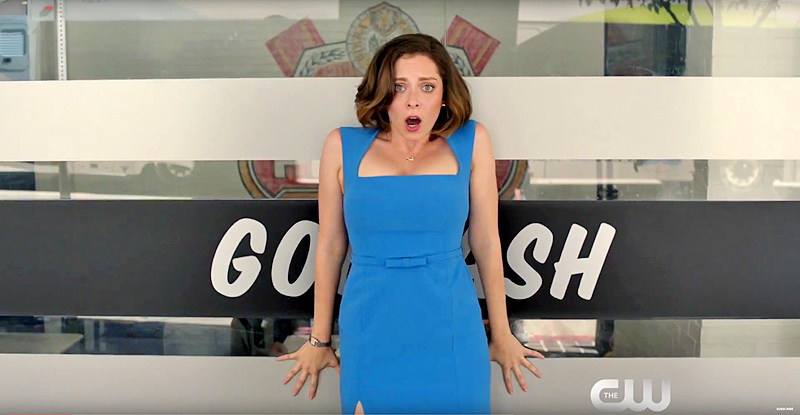This week on Blueprints, Jorge Molina takes a drive to the pride of the inland empire to talk about musical numbers in screenplays, only two hours from the beach.
Fundamentally, scripts serve as a blueprint for what has to appear on screen, hence the name of this series. A blueprint that some people choose to follow more closely than others. However, there are instances where following a script meticulously is vital not only for the benefit of the story, but for the costs and efficiency of an entire production. There are times when a script is a literal choreographed dance, gigantic pretzel and all.

So let’s take a look into the idyllic suburban fantasy of the The CW’s Crazy Ex-Girlfriend, where if every location, note, and twirl hadn’t been precisely mentioned in the script, there may have never been a show...
CRAZY EX-GIRLFRIEND
“Pilot (or Josh Just Happens to Live Here!)”
Written by: Rachel Bloom and Aline Brosh McKenna
[You can read the full script here. I will be talking about these pages and this scene.]
Musical numbers are extremely complicated feats to pull off cinematically; logistical nightmares with a thousand moving pieces. A musical series, where every installment of a twelve-episode season includes three to five numbers? A nearly impossible task. And the team behind Crazy Ex-Girlfriend has not been shy about voicing the hectic schedules and machinations that go on behind the scenes.
A musical number contains so many different aspects of the filmmaking process; from location scouting to music arrangement, and from costuming to choreography. Changes cannot happen on the fly. Usually what’s on the page is what goes. There is no time or money otherwise, especially in television.
Pressure is on even more strongly on the first number of a pilot episode. For Crazy Ex-Girlfriend it was the small town wonder-inspired “West Covina”. This was the number that would establish the visual and tonal style of the entire series, that would establish the location as another character, and is the moment where everything changes for the protagonist, Rebecca Bunch. Pulling off that number was essential for making sure the entire show works. There was no room for mistakes. And the script left none.

There’s no need to discuss the lyrics of the song at depth, because songwriting is a separate job from screenwriting. But I do want to mention the way the song manages to include local references to set the location (“People dine at Chez Applebee”), place the dubious intentions of Rebecca (“but don't get me wrong, if he asked for a date, I would totally be like, that sounds great!), and subvert rhyming schemes (“Look everyone, stop giving me the shakedown. I am not having a nervous...”), all at the same time.
And yet, the real triumph of the writers was to make the script read like a step-by-step choreography of the musical number. To spell out how it should (and eventually would) translate onto the screen.
It directs the characters’ blocking, describing how they move in the space:

It provides cultural reference points for the production team (the art designers, the choreographer, the director) to look back at when creating the visual world.

***

***

And it uses descriptive words and phrases like “striding,” “shrugs it off playfully” or “trying too hard” to help establish the motivation and inner feelings of Rebecca with actions. Showing Rebecca’s internal turmoil would become a recurring motif throughout the show, so it was vital that it be introduced now.
When looking at the finalized musical number, everything that was on the page translated into the episode with remarkable cleanliness. Reading the script truly feels like reading along with the screen. Although this is the desirable effect with any script, here it was a necessity. The script was a to-do list because it had to be.
Not all scripts have musical numbers in them, but perhaps they should be written as if they had. It’s certainly an efficient way to help a very complicated process move along. And not all scripts have a choreographed flash mob number in the middle of a mall, but perhaps they all should have one as well.